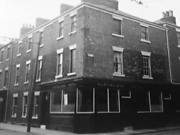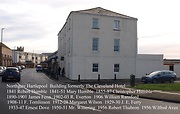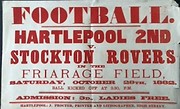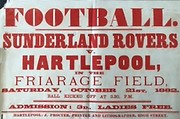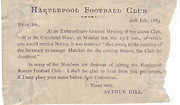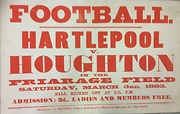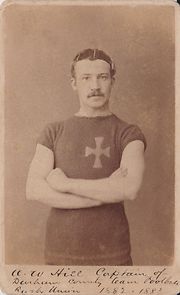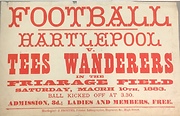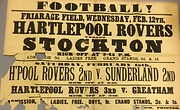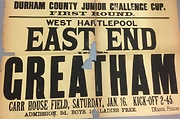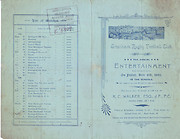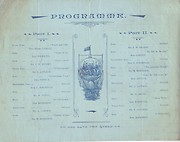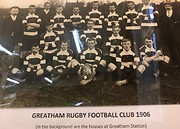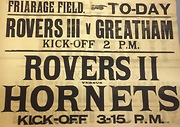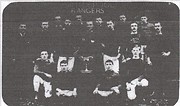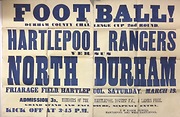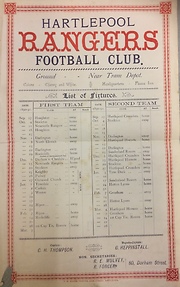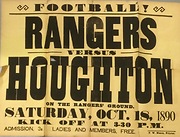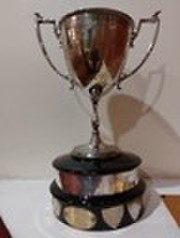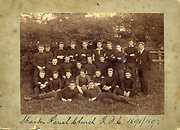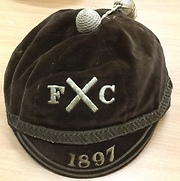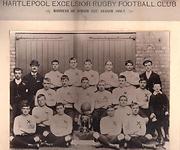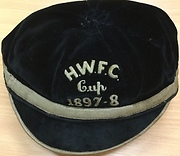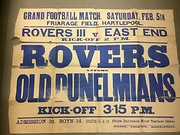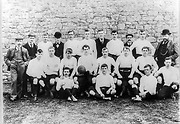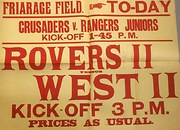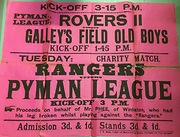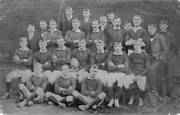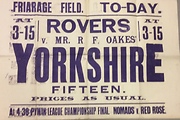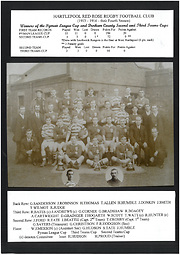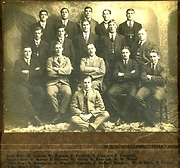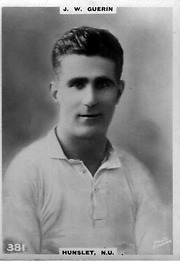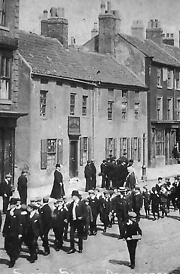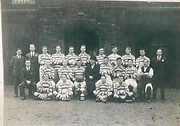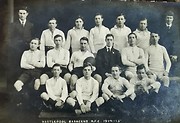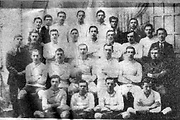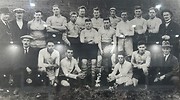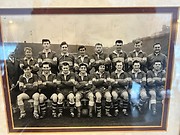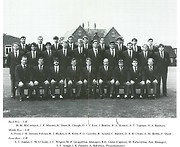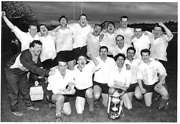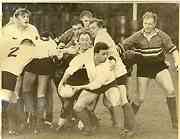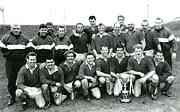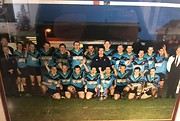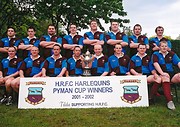 Hartlepool Sports & Leisure
Hartlepool Sports & Leisure
- Cinemas, Theatres & Dance Halls
- Musicians & Bands
- At the Seaside
- Parks & Gardens
- Caravans & Camping
- Sport
 Hartlepool Transport
Hartlepool Transport
- Airfields & Aircraft
- Railways
- Buses & Commercial Vehicles
- Cars & Motorbikes
- The Ferry
- Horse drawn vehicles
 A Potted History Of Hartlepool
A Potted History Of Hartlepool
- Unidentified images
- Sources of information
- Archaeology & Ancient History
- Local Government
- Printed Notices & Papers
- Aerial Photographs
- Events, Visitors & VIPs
 Hartlepool Trade & Industry
Hartlepool Trade & Industry
- Trade Fairs
- Local businesses
- Iron & Steel
- Shops & Shopping
- Fishing industry
- Farming & Rural Landscape
- Pubs, Clubs & Hotels
 Hartlepool Health & Education
Hartlepool Health & Education
- Schools & Colleges
- Hospitals & Workhouses
- Public Health & Utilities
- Ambulance Service
- Police Services
- Fire Services
 Hartlepool People
Hartlepool People
 Hartlepool Places
Hartlepool Places
 Hartlepool at War
Hartlepool at War
 Hartlepool Ships & Shipping
Hartlepool Ships & Shipping

Other Hartlepool and District Rugby Clubs
Details about Other Hartlepool And District Rugby Clubs
Photographs etc. relating to many other clubs playing over the years in the town , especially in Victorian times.
Location
Related items :
 1875 - 1883 - Hartlepool Foot Ball Club
1875 - 1883 - Hartlepool Foot Ball Club
Images of the first known Rugby club in the 'Pools. The club was eventually dissolved in 1883 to join with Hartlepool Rovers to create a stronger Rugby club base in Hartlepool.
An early game for the Hartlepool Club was against United Sunderland on Feby 19th 1876 on the Friarage Field, with 14 men, they beat the Wearsiders 11 men by 4 tries, 1 poster 6 touchdowns to 1 rouge. The Hartlepool X1V was P Chamberlain (Captain), Alfred Belk, E Bell, Thomas Wearmouth, J Wilson, William & Arthur Hill, Bulmer, Sidney Wishart, Irvine, Otto & Henry Trechmann, W Gray & Henry Smurthwaite. The same year, Sunderland opened their new season and got their revenge on 31st October 1876 by trouncing Hartlepool by 3 goals, 3 tries, 1 rouge to two rouges. This was the score at 5.10 p.m. and “as it was now dark”, they stopped play!
More detail »
 1881 - 1912 - Greatham RFC
1881 - 1912 - Greatham RFC
A reminder of the Greatham Club that operated from as early as 1881, and feature throughout the next three decades and were successful particularly when West Hartlepool RFC ceased playing and a number of their major players tranferred to the Village Club for a few seasons in the late 1900s. The Robert Wood collection fortunately records some of their games but any other photographs ro information on the Club would be welcomed.
More detail » 1884 - 1892 - Hartlepool Rangers Football Club
1884 - 1892 - Hartlepool Rangers Football Club
Images of the Rangers Club that played for several years but neither photographs nor records of their exploits appear to have survived. Interviewed by the “Mail” in 1938, Mr. Henry Kaiser (of 60 Montague St) recalled he was a founder member, playing centre when a Rugby team used only 3 threequarters, before the four 3 three quarter system evolved. They were formed around 1883/4 just after the amalgamation of Rovers and Hartlepool, and played initially on a field where Montague Street now stands. Shortly after, they were at Hart Warren, on land later acquired for housing, (Near the Tram Depot) and though enjoying some success,including a player in the County XV, they folded in 1892 as their Hart Warren site had been taken over for housing.
They reached the Final of the 1890 Senior Cup losing to Rovers and then won the Second Teams Cup (in 1892). That year proved fatal for the Club for at the 1892 AGM the club ceased existence with the "shortage of a field" given as the reason and at the Annual Dinner held at the Fleece it was announced that the club would fold as the ground was needed for building sites! The dinner was a formal affair with speeches on aspects of Rugby & Commercial life and then Mr. Heppinstall, the Club Captain, was last to his feet to formally announce the end of the club.
Though the Hartlepool Rangers name fades from the records in the 1890s, an age grade club played under the Rangers name later in the decade, it came back to prominence when a Club also called Hartlepool Rangers was very prominent in Junior Club circles throughout the Edwardian period and achieved Senior Status for a season or so before disappearing in 1912.
More detail »
 1887 - 1892 - West Hartlepool West End RFC - A history
1887 - 1892 - West Hartlepool West End RFC - A history
West Hartlepool West End RFC., extracted from the cuttings Scrapbook of “Robbo”, a member of the West Hartlepool club from 1880s. He wrote his reminiscences in the “Northern Daily Mail” in the early 1920s and included this short history of West End and gives an insight into rugby at minor level at the end of the 1880s. Various images of the West End team can be foound on the Durham County RFU page under "Clubs in the County Junior Cup" gallery.
-0-
But the year 1891 did witness the bringing of a Rugger trophy to West, and the honour was achieved by the West End Club, when they annexed the County Junior Cup in February, 1891.
Starting in the year 1887, the team consisted of a body of working lads disporting themselves on a ground situated at the top of what is now Alma-Street.
For the use of this patch of real estate, thanks to the generosity of Ald. John Suggitt, who was the first president – the club was charged the nominal rental of 1s per year.
My old friend Mr Tom Leak acted as hon. Secretary during the entire existence of the club and the none too exacting duties of hon. Treasurer were capably performed by Mr. W. W. Wright.
Foremost among the clubs guides, philosophers and friends was Mr George Douglas, the Chairman of the Committee, and the first captain was Mr. Will Armstrong, and quoting the words of W.,S. Gilbert, “A right good captain, too, commanding (on the field) a right good crew” Having to seek fresh fields after a brief sojourn, they settled at Foggy Furze, and 1889 – 90 had a most successful season under the captaincy of Tommy Macdougal.
Twenty matches were played of which 14 were won, 5 lost, 1 drawn, the score sheet showing 13 goals, 34 tries and 120 minors against 5 goals, 7 tries and 10 minors.
This particular season ended abruptly. The club succeeded in winnings it way into the final for the Junior Cup, but was defeated by Shields Y.M.C.A by a try to nil after some strange decisions by the referee.
Following the game a protest was laid against the club for playing an ineligible player and the County Union inflicted the somewhat severe penalty of suspending the club till the end of the season (February to April) and the player in question till the end of December.
Nothing daunted, however, operations were resumed in 90-91 in a field at Rose Bank, placed at the club’s disposal by the President, Mr G Pyman
Fifteen games were won in succession against such opponents as Darlington, Stockton, Jarrow, Wallsend, Henderson’s Wanderers, Hetton Lyons, Rovers, and West Second Teams etc.
Their opponents in the final of 90-91 played at Sunderland on Feb , 14, were South Shields Trinity, and at the interval following a determined struggle neither side had scored. Midway through the second half Geo Taylor – the Westoe crack sprinter of later days – intercepted a pass and scored a sensational if unexpected try.
The game was nearing its close when the West boys made a final effort, which resulted in Ernie Jones scoring near the corner flag, Johnny Hopps converting with a magnificent effort and then – finis, The players of immortal memory were: Back N Shawl; three-quarter backs E,Jones, T.McDougal (Capt.) and M Jones; half backs J.Liddle, G. Douglas and B Mann; forwards. Hopps, J.Finlay, J.Sigsworth, E. Metcalfe, J.Carberry, J.Clark, J., Parvin and J. McLean
At the close of the season the unique performance of the team received due recognition. A subscription was opened, and thanks mainly to the efforts of Mr Geo Douglas, medals were presented to the successful players.
With a view to assisting the club financially, a concert was held in the Athenaeum in August 1891, the artistes being Coun John Hunter, Miss L. Wilmot, the misses Pounder and Messrs J.W.Horn,C. Webber, W.Gowans and Prinsky.
During an interval in the programme the medals were presented by Mrs Geo Pyman (wife of the President) assisted by the Mayor of the borough, Ald Robt. Lauder, and Tommy McDougall- as captain of the club – was presented with a silver watch and gold chain as a special mark of admiration and esteem.
Under the constitution of the Durham Union the Durham Junior Cup winners were elevated to senior rank in the ensuing year and this led to the undoing of the West End club.
Defections to Senior clubs took place, Liddle, Hopps, Finlay and others became valuable additions to the West senior club and McDougall became one of the famous combination known as “”two Macs” who represented the Rovers at half back after the retirement of Arthur Scott. Before the disbanding of the club however Mr Tom Leak was presented with a walnut desk bound in brass in appreciation of his loyal and devoted service to the club.
As the transcribers of the mystic lore of ancient Egypt would say “here the record ends”
More detail »
 1890 - 1903 - The Clubs in the Hartlepools Junior Cup
1890 - 1903 - The Clubs in the Hartlepools Junior Cup
Images from just a handful of the many Junior Clubs, that marked the Rugby scene in the two Boroughs during the 1890s, Quite a few would be age based, records make mention clubs as being for players “on average 16 years of age” for example and as young as “131/2 as was the case with St Hilda’s Choir RFC on one occasion. . Many of them played at some time in the Hartlepools Junior Cup (which was restricted to players under 20 years of age) as well as the County Cup Competitions and operated from pubs and church-based organisations.
By 1900, the game at this level was struggling, by that year Rovers III had only played a few games all season as so many Junior Clubs were defunct, Bertie Morison at Old Boys had brought the Big Three together to talk of forming a League of Junior Clubs to revive matters. By 1903 Harold Pyman had taken matters in hand and formed the Pyman Cup Competition on a home and away basis (no use of the word “League” for political purposes) and his initiative continues to today.
More detail » 1903 - 1912 - Hartlepool Rangers - Second Time around.
1903 - 1912 - Hartlepool Rangers - Second Time around.
Images of the very successful Hartlepool Rangers sides that were prominent during the Edwardian period, the club’s name reviving the name of an earlier Hartlepool Rangers that ceased playing in 1892. Like their namesake, who played near the Tram Sheds, this Rangers club also played at Central Estate.Joining the Pyman League from the outset in 1903, they won the League title in 1905, 1908 and 1909, the Second Teams Cup was annexed in 1910 and the Durham County Junior Cup lifted on two occasions namely 1906 and 1908. The County Junior Cup and Pyman Cup double of 1908 was remarkable as Rovers also won the Senior,Second and Third Teams Cup that season, all five trophies were on display in a clotheirs shop in Hartlepool. Further, Rangers lost their opening Pyman match against West that season but then carried all before them that season in an unbeaten run.
The success did not continue, and they faded away in a few years, clues to the decline and disappearance may be that in the 1910 Pyman Cup playoff (refereed by H E Pyman himself) they declined to play due to a dressing room dispute. Whether the game was played is not recorded but Greatham are recorded as winners on the Cup plinth. Rangers continued in the League only for another season before disappearing in 1912, but despite their bust up (not uncommon in those days!) they were promoted to Senior Status in the County, Mr Walter Robinson Bowring,(1878-1934), a prominent Rugby administrator in his day became their County Rep in 1910. Many of the names in the Rangers ranks at this time, are also to be found in the teams of the very successful Red Rose sides that emerged at this time, probably the Red Rose arose from the decline of the Rangers. By February 1912 Rangers failed to turn up at Blaydon for a Senior Cup tie and were fined and in April that year a team called White Hart Rangers played Red Rose, which indicates more upheaval and a change of name, the White Hart being the HQ of both the Rangers and Red Rose at this period
More detail »
 1910 - 1925 - Hartlepool Red Rose
1910 - 1925 - Hartlepool Red Rose
Red Rose, proved the most successful “Junior” club in the years running up the Great War prominent in both the Town and County Cup competitions. Emerging in 1910 they appear to have recruited a number of players from the then declining Rangers club, which had disapeared by 1912.
By 1914, they had carried all before them in both League & County Cups and were anticipating having a crack at playing in the Senior Cup. At the same time one of their 1910 team, Joseph Walter Guerin, then playing for Hunslett was touring in Australia & New Zealand with the Northern Rugby Union team. The War stopped their ambitions as a Senior Club and Secretary Frank Hodgson and many of the players who had not been called up joined with Hartlepool Old Boys for the Wartime period.
Post War they were soon into a familiar stride with the restart of Rugby in the town they were a “Senior” club, and left Old Boys to restart in 1918. Two Red Rose players A.Wikinson and E.Dixon were included in the series of County matches against Northumberland in 1919. The Rose appears to have ceased playing for a while in the early part of 1920. They were "resuscitated" in Nov 1920 when they were allowed to join the Pyman League in place of Hartlepool Harlequins, who had been expelled from the League for not playing 2 matches, and they went on to win the Pyman Cup and League in 1922/23. A guide to their strength at the time is that Red Rose played through 1922/23 and were undefeated in their League matches and one of their few defeats was in the Junior Cup Final that season when they lost to Throston Wanderers on the Friarage Field They then went on to win the Durham County Junior Cup in 1923/1924, when they beat Heortensians 14 – 5 in the Final held on West’s’ Clarence Road ground.
Internal disputes saw the decline and disappearance of Red Rose in 1925, an attempt was made in August 1925 to restart the Club, but the initiative failed.
Like several the pre-WW1 sides, the Red Rose name is a revival, there was a Hartlepool Red Rose Club playing from the mid-1890s and they won the Hartlepools Junior Cup in the 1902/03 season. The name then disappears from the records, and we see the rise of Hartlepool Rangers.
More detail » 1912 - 1918 - Hartlepool Saracens
1912 - 1918 - Hartlepool Saracens
A look into the short life of the Saracens RFC. Formed in 1912, the club initially played in the Ex-Schoolboys League which was also formed around 1912 and aimed at getting School leavers to continue to play Rugby and keep away from street corners and smoking cigarettes! The age limit was decided in late 1913 to be 18 years of age on or before 31 December. Around 10 clubs played in the league, with names such as Trojans, Croft Albion, White Star Athletic, GFSOB, Boys Brigade and Seamen’s Inst all taking part.
Research shows that several of the player’s names and initials listed for Saracens, also appear in Cricket X1s or in Chapel Events organised by Brougham Street Primitive Methodists. Further, the League Sec for the Hartlepool Ex-Schoolboys League Mr R Woodward is another name involved with Brougham Street PMs.
The League ceased on the outbreak of the War and Saracens became part of the Wartime Club scene with games again Durham Garrison artillery, 3rd Yorkshires, Celtic, Crusaders, Welch Regt., and Old Boys. The name disappears from the record in 1918.
More detail » 1916 - Durham Royal Garrison Artillery v Crusaders
1916 - Durham Royal Garrison Artillery v Crusaders
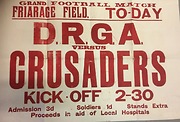 Created by F W Mason
Donated by Hartlepool Museums Service
Created by F W Mason
Donated by Hartlepool Museums ServicePart of the Robert Wood collection
Dated 1909
An image dating from the Great War period, a charity fund raiser for the Hospital, D R G A being the men who manned the Batteries at the Heugh, Fairy Cove and the Lighthouse sites. DRGA Rovers played in the Pyman League in 1913/14 season. Crusaders was also the name of a club that played in the League in the middle of the first decade of the century.
In wartime Hartlepool several clubs operated including Crusaders, Saracens, Seamen’s Mission, Celtic and Old Boys while DRGA plus 3rd Yorks., and 7th Welsh were also able to turn sides out. Depending on numbers available as wartime conditions demanded, both open and military sides would combine to provide a XV.
Besides Charity matches for good causes, Crusaders also played DRGA on days that marked the anniversary of the Bombardment, the game being just one of a number of events throughout the two towns,
It was not just in the Hartlepools that D R G A was a presence in Rugby; the South Shields 4th Durham Howitzer Battery formed a rugby club and reached the Final of the County Junior Cup in 1911 losing to Chopwell at Winlaton. They played on the toughest pitch, probably, in the country – at Trow Rocks, (the Battery site) which had minimal topsoil cover – if any!
More detail »
 1925 - Peterlee & Horden
1925 - Peterlee & Horden
Images of the Horden Club, formed on July 17th, 1925, as Horden CW RFC, and playing their first game on October 3rd that year, a win against Hartlepool Rovers II, by 6 – 3. They played on Welfare Park Horden, until 2016/17 season when they moved to Eden Park, Peterlee, and changed their name to initially to Horden & Peterlee RFC. They now operate as Peterlee & Horden RFC.
More detail » 1940 - Grays v Richardson Westgarth Rugby Team
1940 - Grays v Richardson Westgarth Rugby Team
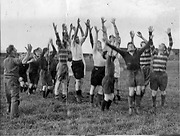 Donated by John Dee
Donated by John DeeGray's Richardson rugby team training circa 1940. Two of the local ship yards used to join ranks and form a rugby team. Here they can be seen being put through their paces by Johnny Dee.
Games between Richies and Grays were a feature of the town programme until the 1960s.
More detail » 1968 - GEC-AEI v Hartlepool Rovers
1968 - GEC-AEI v Hartlepool Rovers
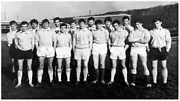 Created by Unknown
Donated by Richard Baggett via Kathy Birkbeck.
Created by Unknown
Donated by Richard Baggett via Kathy Birkbeck.Part of the History of Hpl in images FB collection
Dated 1968
An image of the GEC Apprentices XV in 1968, a win against Rovers on the New Friarage, the AEI was another ad-hoc side works side that feature history of the game hereabouts.
The factory also had a Junior Club side as Sieman's in the early 50s, Mr A A Newstead being the Hon Sec and played in the County Cup competitions before fading away after a few seasons.
More detail » 1978 - Foster Wheeler Barbarians v Hartlepool Rovers.
1978 - Foster Wheeler Barbarians v Hartlepool Rovers.
 Part of the John Bickerstaffe collection
Part of the John Bickerstaffe collectionDated 1975
Another Factory side that featured in mid week or Sunday occasional matches during the season was Foster Wheeler based in Brenda Road.
More detail » 1984 - Hartlepool Police XV v Hartlepool 2nds
1984 - Hartlepool Police XV v Hartlepool 2nds
 Created by Mail Hartlepool
Donated by Junior Rugby Scene
Created by Mail Hartlepool
Donated by Junior Rugby ScenePart of the Chris McLoughlin collection
Dated 1984
An image of the Town Police side that took on and defeated Hartlepool 2nds in March of 1984 by 3 – 0.
More detail »
 1990 - Hartlepool Power Station RFC
1990 - Hartlepool Power Station RFC
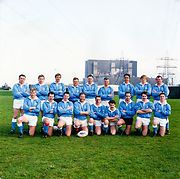 Created by Unknown
Donated by Paul Fincken
Created by Unknown
Donated by Paul FinckenDated 1990
Along with many other “works” teams that have featured on the Fixture lists over the years, Hartlepool Power Station turned out sides over the years. We don’t have a date for this image, news would be welcomed, as would images of any of the Monsanto, British Telecom or Foster, Wheeler sides that have played in the area.
More detail » 1997 - West Hartlepool Amateurs
1997 - West Hartlepool Amateurs
 Created by Unknown
Donated by West Hartlepool Amateurs RFC
Created by Unknown
Donated by West Hartlepool Amateurs RFCPart of the West Hartlepool Amateurs RFC collection
Dated 1997
Formed in 1997 was up for players from the 3rd & 4th teams of West Hartlepool for two main reasons. Firstly “West” who were in National Division 1 at the time, had recently “gone professional”. This led to a fear they would not need the lower teams, who wanted to play social rugby. Secondly fixtures were becoming more difficult to find at this level and with the advent of league rugby many Junior clubs with free Saturdays fell dramatically.
By forming the “Ams” social rugby was preserved and the club was able to join the Leagues after joining Durham County RFU after being sponsored by West and Rovers!
The new club played out of Brierton La\ne using strips and kit borrowed from West and success came in the first season 97/98, winning every match to become D & N IV Champions.
The following season they were runners up in the Pyman Cup and when West hit financial difficulties and Brierton Lane was sold for housing development Ams relocated, playing their game at 6th FC at Brinkburn and using the Shakespeare put as “home”
Three years later West joined the Ams at the College site and with the opening on a new club the two clubs once again shared the same home. Natural wastage and a drift of players to other clubs saw the club cease playing regularly and the club continues today to be registered but not playing games.
More detail »
 1998 - Cleveland Police v West Hartlepool - Neil Carbro Memorial Match
1998 - Cleveland Police v West Hartlepool - Neil Carbro Memorial Match
 Created by Unknown
Donated by Les Peacock
Created by Unknown
Donated by Les PeacockPart of the Les Peacock collection
Dated 1998
The Cleveland Police XV and guests players including All Black, Mike Brewer, then coaching at West, for the memorial match for Neil Carbro.
More detail »




